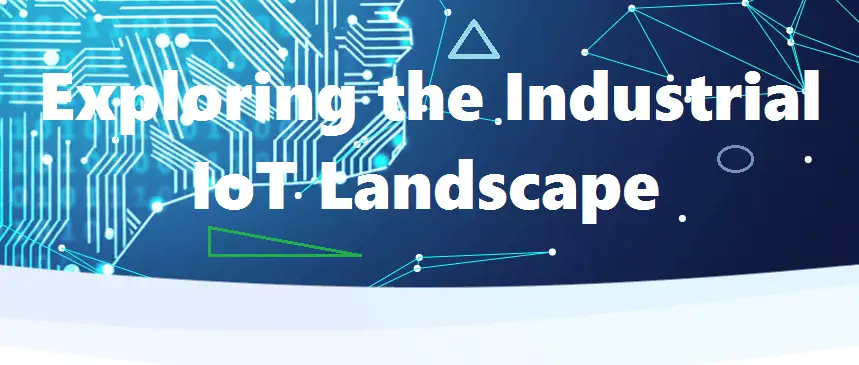
Visits: 1
This article provides a comprehensive overview of the Industrial Internet of Things (IoT), including market estimates and adoption phases. The introduction sets the stage for understanding the significance of Industrial IoT, followed by a detailed analysis of market estimates.
The article then deeps deep into the various phases of Industrial IoT adoption, providing insights into the challenges and opportunities presented at each stage. Finally, the conclusion offers a future outlook for Industrial IoT, highlighting its potential impact on industries and businesses worldwide. This informative piece is a must-read for anyone interested in staying ahead of the curve in the rapidly evolving world of Industrial IoT.
1. Introduction to Industrial IoT
The Industrial Internet of Things (IoT) is a rapidly growing field that is transforming the way we interact with technology. It refers to the integration of physical devices, sensors, and software systems in industrial settings to improve efficiency, productivity, and safety. The Industrial IoT has the potential to revolutionize industries such as manufacturing, transportation, energy, and healthcare by enabling real-time monitoring, data analysis, and automation. This technology is expected to generate significant economic benefits and create new business opportunities for companies that adopt it. In this article, we will explore the current state of the Industrial IoT landscape, including market estimates and adoption phases.
2. Market Estimates for Industrial IoT
The Industrial Internet of Things (IIoT) has been gaining traction in recent years, with more and more companies adopting this technology to streamline their operations and improve efficiency. According to market estimates, the global IIoT market is expected to reach $949.42 billion by 2025, growing at a CAGR of 29.4% from 2019 to 2025.
The growth of the IIoT market can be attributed to several factors such as the increasing demand for automation and digitization across industries, the need for predictive maintenance and real-time monitoring, and the emergence of advanced technologies such as cloud computing, big data analytics, and artificial intelligence.
In terms of industry verticals, the manufacturing sector is expected to dominate the IIoT market, followed by energy and utilities, transportation and logistics, and healthcare. The manufacturing sector is expected to witness significant growth due to the increasing adoption of Industry 4.0, which emphasizes the integration of digital technologies into the manufacturing process.
Geographically, North America is expected to hold the largest share of the IIoT market, followed by Europe and Asia Pacific. This can be attributed to the presence of major IIoT players in these regions, coupled with the increasing adoption of IIoT solutions by various industries.
Overall, the IIoT market is poised for significant growth in the coming years, driven by the increasing demand for automation and digitization across industries. As more companies adopt IIoT solutions, we can expect to see further advancements in this field, leading to improved efficiency, productivity, and profitability.
3. Phases of Industrial IoT Adoption
The adoption of Industrial IoT is a gradual process that involves several phases.
Exploration phase
The first phase is the exploration phase, where companies begin to explore the potential benefits of Industrial IoT and identify areas where it can be applied. During this phase, companies may conduct pilot projects to test the technology and evaluate its effectiveness.
Experimentation phase
The second phase is the experimentation phase, where companies start to implement Industrial IoT solutions on a larger scale. This phase involves more extensive testing and validation of the technology, as well as the development of new business models and processes to support its use.
Deployment phase
The third phase is the deployment phase, where companies fully deploy Industrial IoT solutions across their operations. This phase involves significant investment in infrastructure and technology, as well as the integration of data from various sources to create a unified view of operations.
Optimization phase
Finally, the fourth phase is the optimization phase, where companies focus on optimizing their Industrial IoT solutions to improve efficiency, reduce costs, and enhance performance. This phase involves ongoing monitoring and analysis of data to identify opportunities for improvement and make adjustments to the system as needed.
Overall, the adoption of Industrial IoT is a complex process that requires careful planning and execution. By understanding the different phases of adoption, companies can develop a roadmap for implementing Industrial IoT solutions that will deliver maximum value and impact.
4. Conclusion and Future Outlook for Industrial IoT
As we conclude our exploration of the Industrial IoT landscape, it is clear that this technology has immense potential to transform industries and revolutionize the way businesses operate. The market estimates for Industrial IoT are staggering, with projections indicating that the global IIoT market will reach $933.62 billion by 2025.
However, while the potential benefits of IIoT are significant, there are also challenges that must be addressed. One of the biggest obstacles to widespread adoption is the lack of standardization across different platforms and devices. This makes it difficult for companies to integrate IIoT into their existing systems and processes.
Despite these challenges, the future outlook for Industrial IoT remains bright. As more companies begin to adopt IIoT, we can expect to see increased standardization and interoperability, which will make it easier for businesses to implement this technology. Additionally, advancements in artificial intelligence and machine learning will enable IIoT systems to become even more sophisticated and intelligent, leading to further improvements in efficiency and productivity.
Wrapping Up
In conclusion, the Industrial IoT landscape is rapidly evolving, and businesses that embrace this technology stand to gain a competitive advantage in the marketplace. While there are challenges to overcome, the potential benefits are too great to ignore. As we move forward, we can expect to see continued growth and innovation in the Industrial IoT space, with exciting new developments on the horizon.


%20(1).png)


